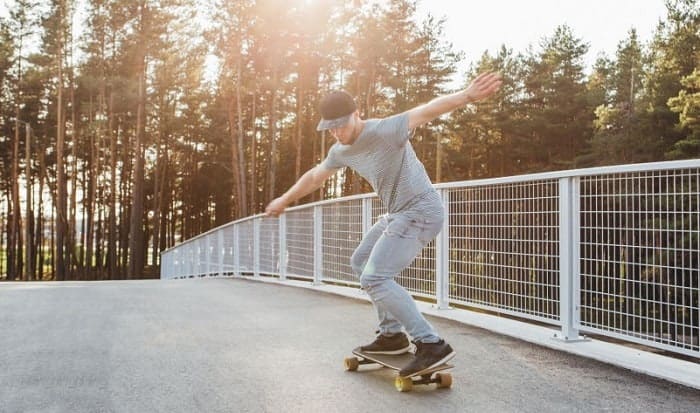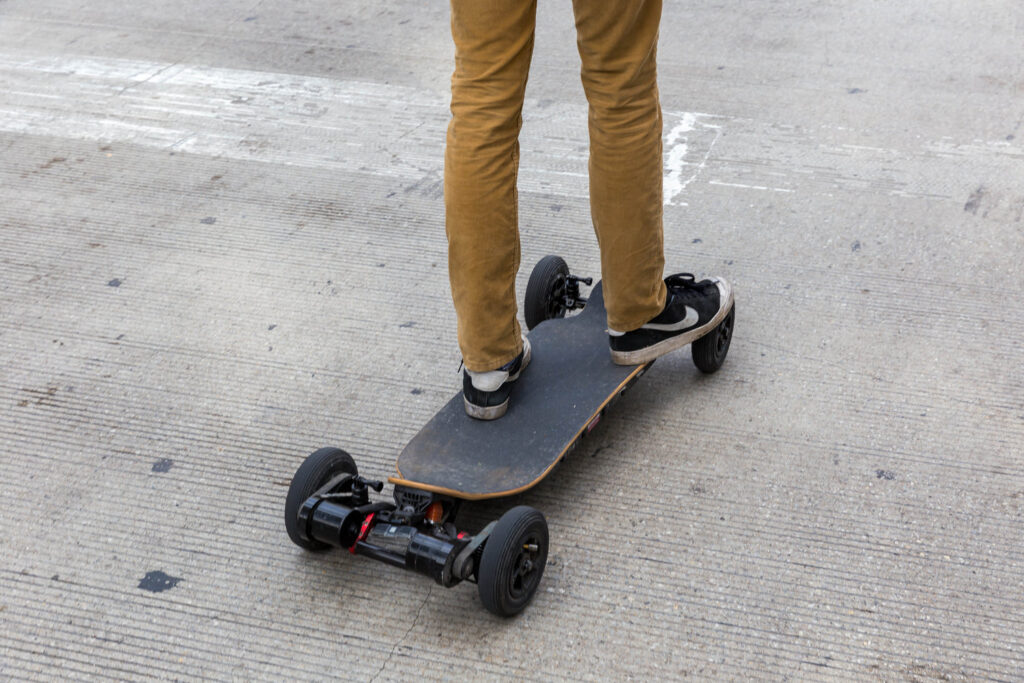To turn on a longboard, push the power button on the remote control. Longboards typically have electronic components and mechanical parts that allow for motion.
Longboarding is an enjoyable activity that requires the proper use of equipment. Turning on a longboard is the initial step before riding it. Learning how to turn on a longboard can be confusing for beginners who haven’t used electric longboards before. To turn on a longboard, locate the power button on the remote control and push it. Longboards are powered by electronic components that control the motor and mechanical parts that convert electricity into motion. Turning on the longboard motor provides the initial motion required to begin longboarding. As a rider, it’s important to ensure that all parts of the longboard are sturdy and in good working order before taking it for a ride.

Credit: www.concretewavemagazine.com
Proper Foot Positioning
Mastering Foot Positioning For Turning On A Longboard
Longboarding is a fun and exciting activity that is becoming increasingly popular. However, it requires proper techniques and skills to make the most out of the experience. One of the essential techniques for an effective ride is proper foot positioning, which plays a crucial role in turning the longboard.
In this tutorial, we discuss the importance of foot placement when turning and how to do it correctly.
Tutorial On How To Place Your Feet On The Longboard
Before we dive into the importance of foot placement when turning on a longboard, let’s first look at how to position your feet correctly on the board.
- Stand shoulder-width apart with your feet parallel to each other.
- Place your front foot on the board’s deck, pointing towards the nose, with your toes hanging slightly off the edge.
- The back foot should be positioned over the back trucks and perpendicular to the board’s length, with the heel hanging slightly off the edge.
- Bend your knees and shift your weight forward to balance on the board.
Importance Of The Positioning In Turning
The positioning of your feet plays a critical role in executing turns effectively. Proper foot placement ensures that you have greater control and balance over the board, improving your maneuverability and performance.
- When turning, shift your weight towards your toes, which will cause the board to tilt on its edge, initiating the turn.
- Keep your knees bent and your core engaged to maintain your balance and control throughout the turn.
- The foot positioning should be adjusted according to the type of turn you want to make. For sharp turns, shift your front foot forward, and for wider turns, shift it backward.
Mastering foot positioning when turning on a longboard is an essential technique to improve your balance, control, and maneuverability on the board. Proper foot placement ensures a smoother and more exciting ride, making longboarding a more fulfilling experience. So the next time you hit the road, remember to pay close attention to your foot position and execute those turns like a pro!
Center Of Gravity
The Role Of Center Of Gravity In Turning On A Longboard
Are you struggling to make smooth and sharp turns on your longboard? Do you feel like you are unable to execute a turn as effectively as other longboarders? One crucial concept that every longboarder should master is the center of gravity.
Understanding the center of gravity is essential to increase your turning proficiency and to make your rides smoother and safer.
Explanation Of The Basic Concept Of Center Of Gravity
The center of gravity is the point where the entire weight of the board and the rider is concentrated. The position of the center of gravity varies depending on how you distribute your weight on the board. Essentially, the center of gravity is the balance point where the gravitational force acts vertically downwards.
Importance Of Understanding The Like Concept To Increase Turning Proficiency
The position of the center of gravity has a direct impact on the turning capacity of your longboard. A proper understanding of this concept can enhance your performance and help you make the turns with ease and precision. Failing to understand the center of gravity concept can make your rides bumpy, uncomfortable, and even dangerous.
Tips On Distributing Your Weight Properly
To maximize your turning capabilities, you should try to distribute your weight towards the center of the board, as this is where the center of gravity is located.
- Keep your feet a shoulder-width distance apart, with your toes pointing forward and slightly towards the edges of the board.
- Keep your knees slightly bent and your core engaged to maintain balance.
- Position your weight over the front trucks of the board to execute sharp turns while still maintaining stability.
- Shift your weight back towards the tail of the board to initiate a carve or make a turn while riding at higher speeds.
By implementing these tips, you will be able to shift your center of gravity effectively and execute turns with ease.
Mastering the center of gravity concept is a vital step for all aspiring longboarders. Of course, there are other factors involved in turning, such as foot position, speed, and board size, but understanding the center of gravity will help you make smoother and sharper turns, enhance your performance, and make your longboarding journeys more enjoyable and safer.
HOW TO LONGBOARD/SKATEBOARD FOR BEGINNERS
Carving Techniques
Improving Carving Techniques For Better Turns On A Longboard
Longboarding is an excellent way to explore the outdoors and challenge yourself. Turning on a longboard might seem daunting, but it is a skill that you can easily learn with the right techniques. In this post, we’ll focus on carving techniques, which are a vital part of turning on a longboard.
Explanation On How To Carve On A Longboard
Carving is when you make s-shaped turns on your longboard.
- Shift your weight to your toes or heels, depending on which direction you want to turn.
- Lean into the turn and twist your hips to face the direction of the turn.
- Apply pressure on the rails of the board with your feet.
- As you come out of the turn, shift your weight back to your normal stance.
Importance Of Turning While Carving
Turning is crucial for carving because it helps you maintain control of your board while moving at high speeds. It also enables you to navigate sharp turns and avoid obstacles on the road.
Tips On Adjusting The Radius Of The Carve Based On Preference And Maneuverability
Adjusting the radius of your carve is important for maneuverability and preference.
- Widen the radius of your carve for smoother turns.
- Narrow the radius of your carve for sharper turns.
- Experiment with different radii until you find the perfect fit for your riding style.
Carving is an essential technique for longboard riders. Practice these techniques regularly and adjust your carve radius to your liking for better turns. With time and patience, you’ll be carving like a pro in no time. Happy riding!
Sliding Techniques
Mastering Sliding Techniques For Better Turns On A Longboard
Longboarding is more than just cruising. It’s about carving, controlling your speed, and executing sharp turns. One of the essential skills a longboarder must have is the ability to perform slides. Sliding is an effective technique that enables you to maintain control while turning at high speeds.
Here’s how to slide on a longboard.
Explanation On How To Slide On A Longboard
Performing a slide requires balance, confidence, and coordinated movements.
- Find a smooth, flat surface with plenty of space.
- Pick up speed and shift your weight towards the back of your longboard.
- With your back foot, press down hard on the tail of your board.
- As you move your front foot towards the front trucks, turn your shoulders and hips in the direction you want to slide.
- Apply pressure to your front foot by pushing it in the opposite direction of your back foot.
- Your board’s wheels will temporarily break traction, causing you to slide.
Importance Of Sliding While Turning
Sliding plays a crucial role in making sharper turns and controlling your speed.
- Enables you to make tighter turns. By sliding, you can carve around corners without sacrificing speed.
- Prevents wobbling. By sliding, you can reduce board wobbles that can cause accidents at high speeds.
- Allows you to maintain control. Sliding enables you to control your longboard and prevent it from slipping out from under you.
Tips On Adjusting The Speed Of The Slide Based On Preference And Maneuverability
Mastering your sliding technique requires practice, patience, and balance.
- Become comfortable with the sliding technique first in order to adjust the speed.
- Increase pressure on your front foot to increase slide speed.
- Decrease pressure on your back foot to reduce slide speed.
- Practice different sliding techniques to improve your maneuverability.
By following these steps, you can slide effectively, turn sharply, and maintain control of your longboard while carving down hills and cruising around town. Keep practicing, and you’ll be a pro in no time.
Conclusion
Now that you’ve learned how to turn on a longboard, you can take your riding to the next level! Remember to keep your weight towards the front of the board while initiating the turn and to keep your eyes focused on where you want to go.
Practice makes perfect, so don’t be discouraged if you don’t get it right away. Experiment with different techniques and find what works best for you. It’s important to always prioritize safety while riding, so make sure to wear proper protective gear and ride in a safe area.
By mastering the art of turning on a longboard, you can enjoy the freedom and thrill of cruising down the street with ease and confidence. Happy riding!



